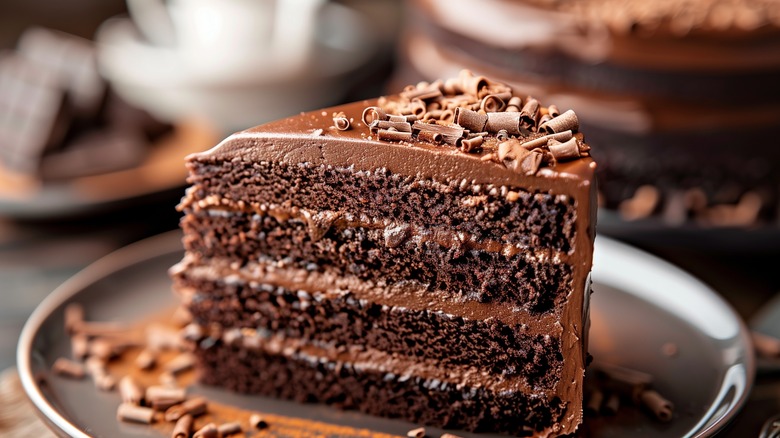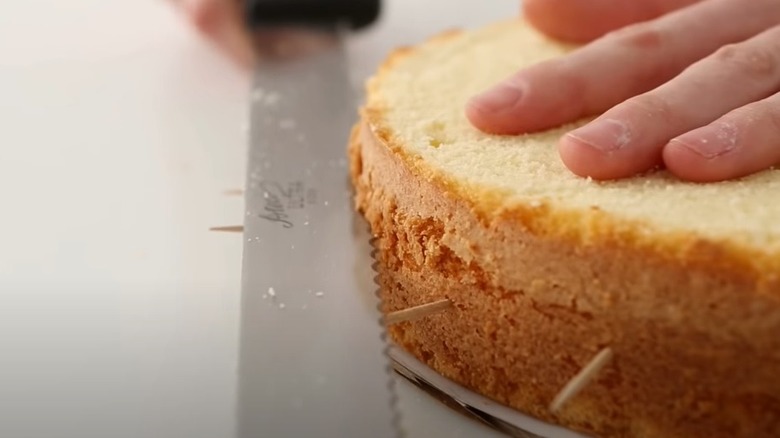A Toothpick Is All You Need For Bakery-Worthy Cake Layers
Leveling a cake into uniform layers is tricky even for professional bakers who've honed their craft. Just one slip and you can end up with a layer of sponge that's as thin as a pancake on one side and as thick as a doorstop on the other. Luckily, there's a simple technique to help you produce level rounds of bakery-worthy chocolate cake at home and all you need are a handful of toothpicks.
Begin by placing a ruler up the side of your cooled cake and locating the midpoint so you can see exactly how high up you need to cut to produce two identical discs. Pierce a toothpick horizontally through the cake at this midpoint mark so half of it is inserted into your sponge. Continue with this technique, working your way around the circumference of the cake, each time inserting a new toothpick halfway through.
About 8 equally spaced toothpicks should be enough but you may need more depending on the size of your cake. Just be mindful to avoid adding too many toothpicks into a particularly tender sponge that could break apart if overhandled. Place your serrated knife on top of the toothpicks as if you were getting ready to slice through a bagel. Then glide your knife almost halfway through the cake, using a gentle sawing motion, before moving it around its circumference and repeating the same process until you've gone all the way around.
The toothpicks create a physical guide for your serrated knife
You should find that the toothpicks keep your knife steady and prevent you from cutting down into the cake by creating a physical barrier. Once you've cut all the way around you can glide your knife through the final bit in the center with ease. Gently pick up the top layer of cake and set it down on a cake board or clean counter and remove the toothpicks from the bottom layer before getting on with filling the middle.
Whatever you do, make sure your cake is fully cooled before using the toothpick technique to level it. A hot cake will be too tender to cut through neatly and it may sink afterwards if you've used too much raising agent, so patience is key. You should also lay your cake on a flat surface, such as a countertop or cutting board, instead of a lipped plate or tray. A turntable is ideal because it has a level surface and you can keep your knife in place while you turn the cake itself. Using a serrated knife to level your sponge is also a must because it has teeth that can seamlessly cut into a cake gently without damaging its tender texture. If you find that your cake has domed, allow it to cool in the tin and level the top of your sponge while it's still in the pan before cutting into layers.

